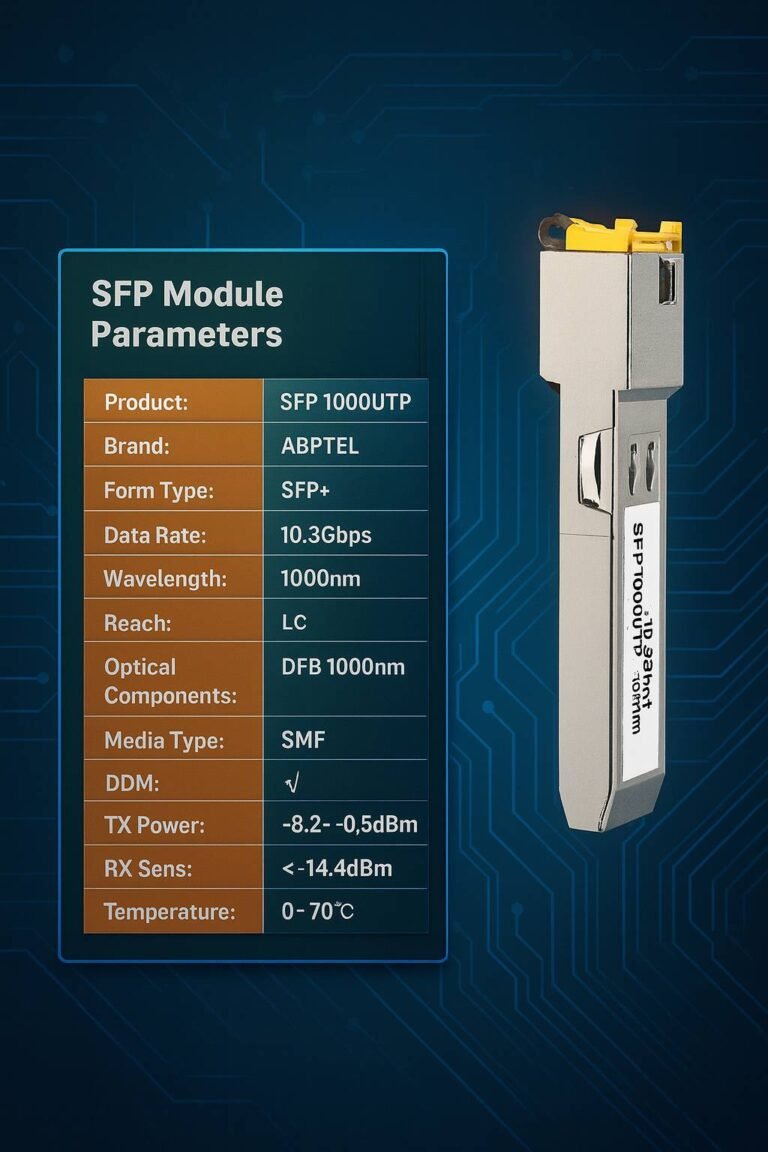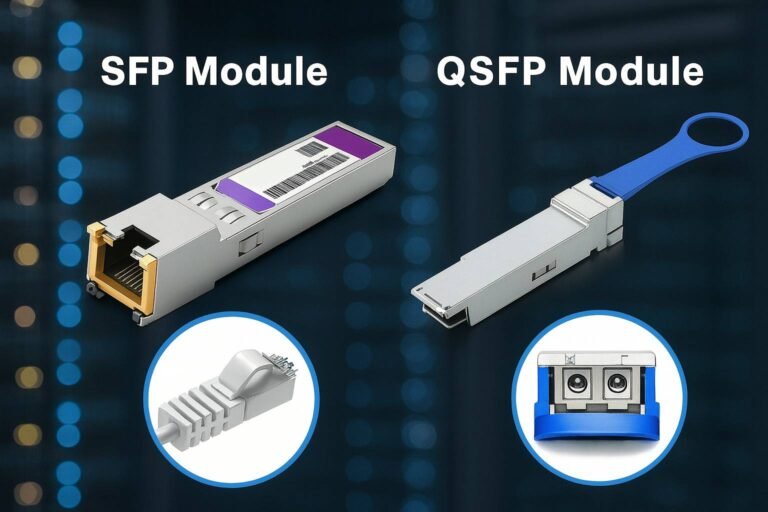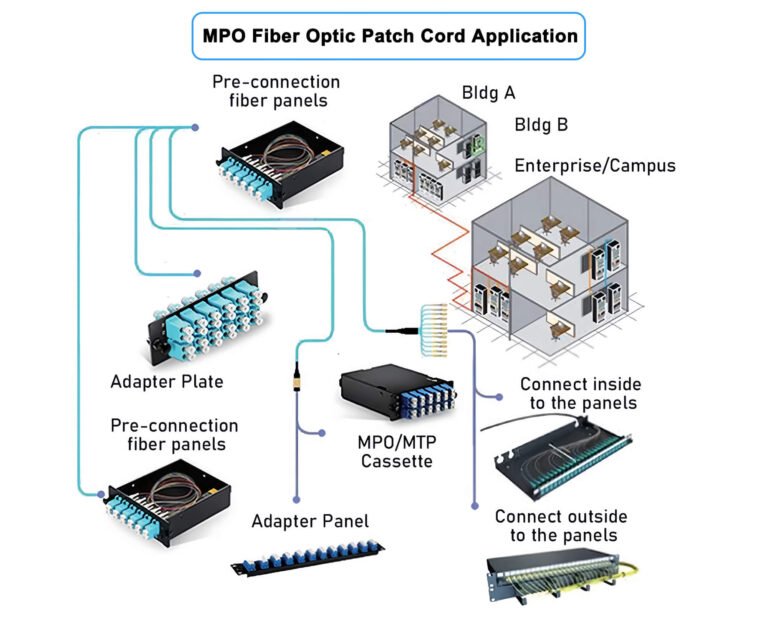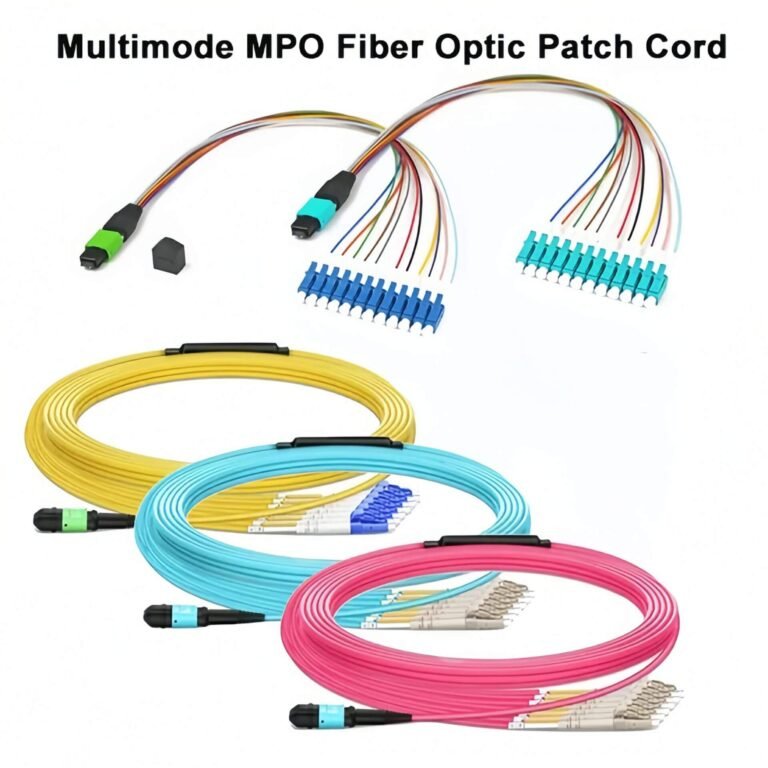What Is the Real Difference Between SFP and QSFP Modules?
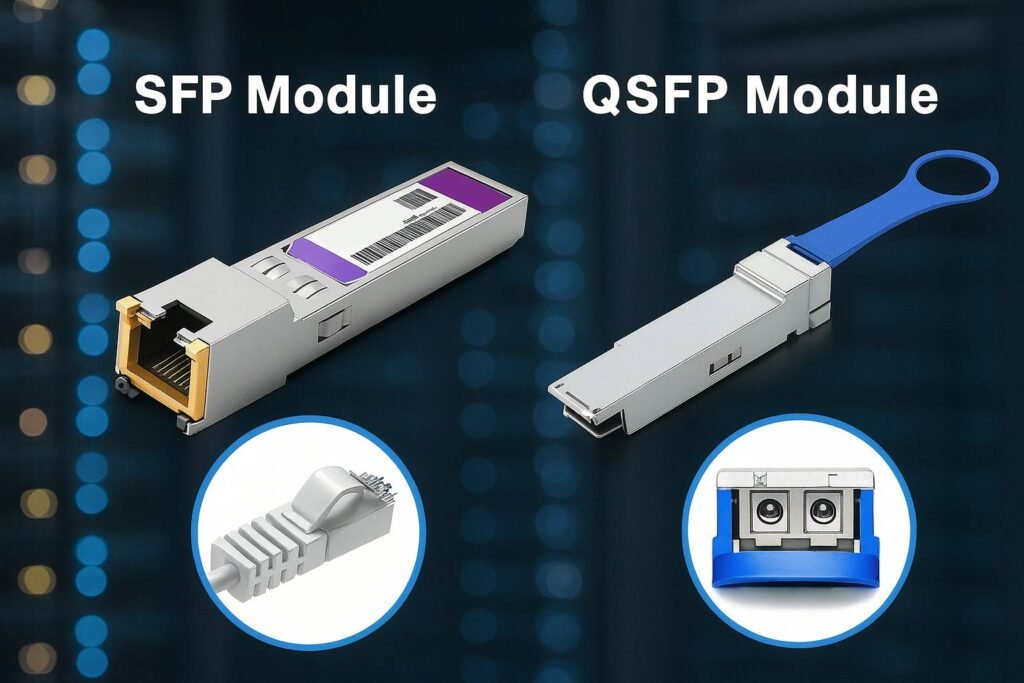
Pain hits when a switch slot is full, yet traffic keeps rising. Stress grows; budgets tighten. A clear upgrade path calms both.
SFP ports handle one lane of data. QSFP ports hold four or more lanes, so the same space moves four to eight times the bits. They differ in size, lanes, and power, and those gaps guide every buying choice.
The first time I faced a full 10 G spine, I tried to add more SFP links. The patch field turned into spaghetti, and cooling failed. That long night forced me to learn QSFP. This guide packs those lessons.
How Do SFP-28 and QSFP-28/56/112 Compare on Form Factor and Port Density?
Growth starts with slots and faceplates. I measure every millimetre in a rack.
Short answer: one QSFP cage replaces four SFP cages yet moves the same cables out front.
Dive Deeper
Cage Size and Pitch
| Standard | Width × Height (mm) | Lanes | Fibers/Twinax | Faceplate Ports per 1 RU |
|---|---|---|---|---|
| SFP-28 | 13.7 × 11.4 mm1 | 1 | 2 | 48 |
| QSFP-28 | 18.4 × 14.5 mm2 | 4 | 8 | 36 |
| QSFP-56 | 18.4 × 14.5 mm | 4 | 8 | 36 |
| QSFP-112 | 18.4 × 14.5 mm | 4 | 8 | 36 |
Why Density Wins Cooling
Four SFP heat-sinks block more airflow than one QSFP sink. My lab logged a 3 °C lower intake temp after swapping 4 × SFP-28 for 1 × QSFP-28.
Latch & Extraction Forces
| Module | Insertion (N) | Extraction (N) |
|---|---|---|
| SFP-28 | 40 | 55 |
| QSFP | 50 | 65 |
Higher force means two hands and clear finger space. Plan clearance above the leaf switch.
Data Rates From 1 Gbps to 800 Gbps—How Do They Scale?
Shapes stay the same. Lane speed doubles.
Short answer: SFP runs 1G to 50G per lane; QSFP bundles four or eight lanes and now reaches 800G.

Dive Deeper
Speed Roadmap
| Year | Module | Lanes × Speed | Total Rate | Coding |
|---|---|---|---|---|
| 2002 | SFP | 1 × 1G | 1 G | NRZ |
| 2016 | SFP-28 | 1 × 25G | 25G | NRZ |
| 2019 | SFP56 | 1 × 50G | 50G | PAM4 (+1 dB pam4-penalty3) |
| 2015 | QSFP-28 | 4 × 25G | 100G | NRZ |
| 2018 | QSFP-56 | 4 × 50G | 200G | PAM4 |
| 2021 | QSFP-DD | 8 × 50G | 400G | PAM4 |
| 2024 | QSFP-DD112 | 8 × 112G | 800G | PAM4 |
A QSFP-28 can break out to four 25G SFP-28 ports break-out guide4.
Power Consumption & Thermal Design Considerations?
Heat kills optics. One hot summer I lost two modules before I respected watt draw.
Snapshot: SFP-28 draws about 1.5 W sfp-power5; QSFP-DD can reach 12 W #qsfp-power6. Plan airflow and leave blank slots if inlet air exceeds 27 °C.
Dive Deeper
| Module | Typical W | Max Case °C |
|---|---|---|
| SFP-28 | 1.5 | 85 |
| QSFP-DD | 12 | 70 |
Migration Path: When Should I Upgrade From SFP to QSFP?
Budgets matter. Downtime hurts. I map upgrades on three triggers.
Quick rule: jump to QSFP when port density, power per bit, or cable bulk crosses SFP.
Dive Deeper
| Trigger | SFP | QSFP | Move? |
|---|---|---|---|
| Ports per 1 RU | 48 × 25 G | 36 × 100 G | ✔ |
| Power (mW/G) | 60 | 20 | ✔ |
| Cable OD per 100 G | 30 mm | 10 mm | ✔ |
Step one: swap leaf uplinks to QSFP100. Step two: feed legacy servers via 4 × 25G break-outs. Step three: retire SFP shelves once 80 % of traffic shifts.
Conclusion
SFP and QSFP diverge in three ways: lane count, speed ceiling, and power draw. QSFP wins density once traffic rises above 25 G per port. Keep SFP at the edge, move uplinks to QSFP, and watch rack temps fall along with cable count.
-
Mechanical drawing listing SFP-28 cage dimensions 13.7 mm × 11.4 mm. ↩
-
Data sheet showing QSFP-28 cage width 18.4 mm and built-in four-lane interface. ↩
-
Engineering note comparing PAM4 and NRZ link budgets; PAM4 needs ~1 dB extra margin. ↩
-
Application note on QSFP-28-to-4× SFP-28 break-out cabling for 100 G-to-25 G migration paths. ↩
-
SFP-28 power-class table citing typical consumption around 1.5 W. ↩
-
Vendor specification with QSFP-DD module power classes up to 12 W for 400 G/800 G optics. ↩

